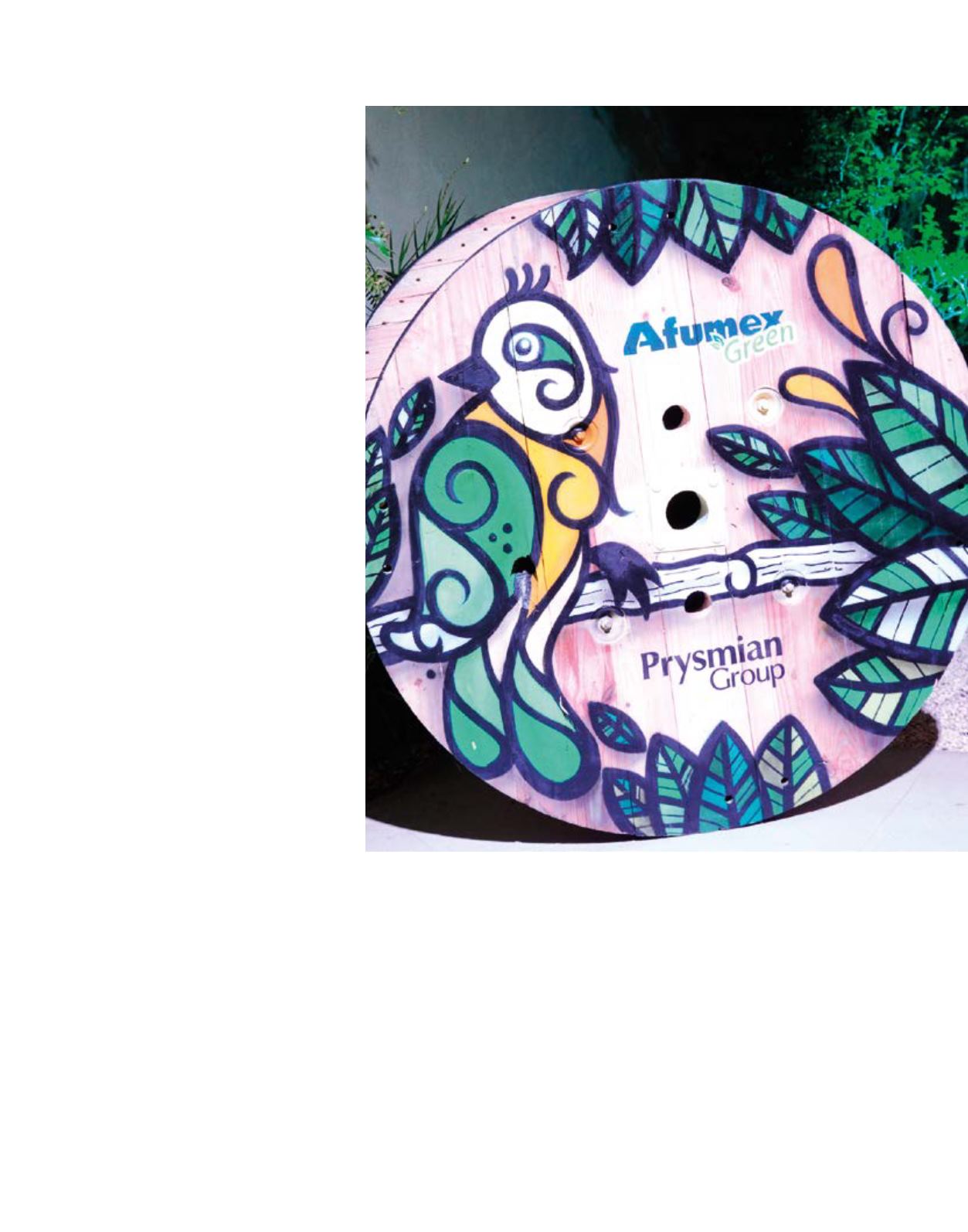

65
Produced using recyclable raw materials,
P-Laser reduces the environmental impact
of circuits grids while increasing their
efficiency and power transmission capacity.
The Prysmian Group’s R&D department
has completed a project to compare the
environmental impact of two different
systems for the production of medium
voltage power cables: P-Laser and XLPE.
This study was conducted using the Carbon
Footprint methodology to quantify the
entire environmental impact of each system
in terms of its emissions of CO
2
equivalent.
The results showed that the CO
2
emissions
associated with P-Laser cables are 30% of
the total emissions attributable to XLPE
cables, being about 800-1,000 kg of CO
2
for
each kilometre of cable produced.
Prysmian received Frost & Sullivan's
"European New Product Innovation" award
in 2015 for its BendBrightXS optical fibre,
which paves the way for a multitude of
innovative cable solutions applicable to a
wide range of network configurations and
able to combine exceptionally low sensitivity
to macro-bending with a micro-bending
performance in line with industry standards.
Green polyethylene
Green polyethylene, green plastic or green
PE: are the names usually used for linear low
density polyethylene (LLDPE) made from
renewable sources (ethanol), i.e. not derived
from petrol, unlike ordinary polymers. This
innovative technology, based on the use of
sugar cane, has been developed by Braskem,
a Brazilian company and supplier of raw
materials to Prysmian.
In keeping with the main developments in
the field of safe, reliable and sustainable
technologies, Prysmian has once again
demonstrated its pioneering spirit and
capacity for innovation by expanding its line
ofAfumexGreencables,withtheintroduction
of Afumex Green 1kV, the safest and most
sustainable cable currently on the market.
Traditional petroleum-derived polyethylene
used for insulation has been replaced in
New green high-performance
products: P-Laser
The future of broadband
is getting closer
Afumex Green:
created for the planet
this new cable with biopolyethylene (green
polyethylene), a material obtained from
sugar cane, which is 100% recyclable,
internationally certified and able to reduce
emissions of CO
2
.
It is estimated that for every tonne of green
polyethylene produced, more than two
tonnes of CO
2
are captured and removed
from the atmosphere during the sugar cane's
cultivation.

















